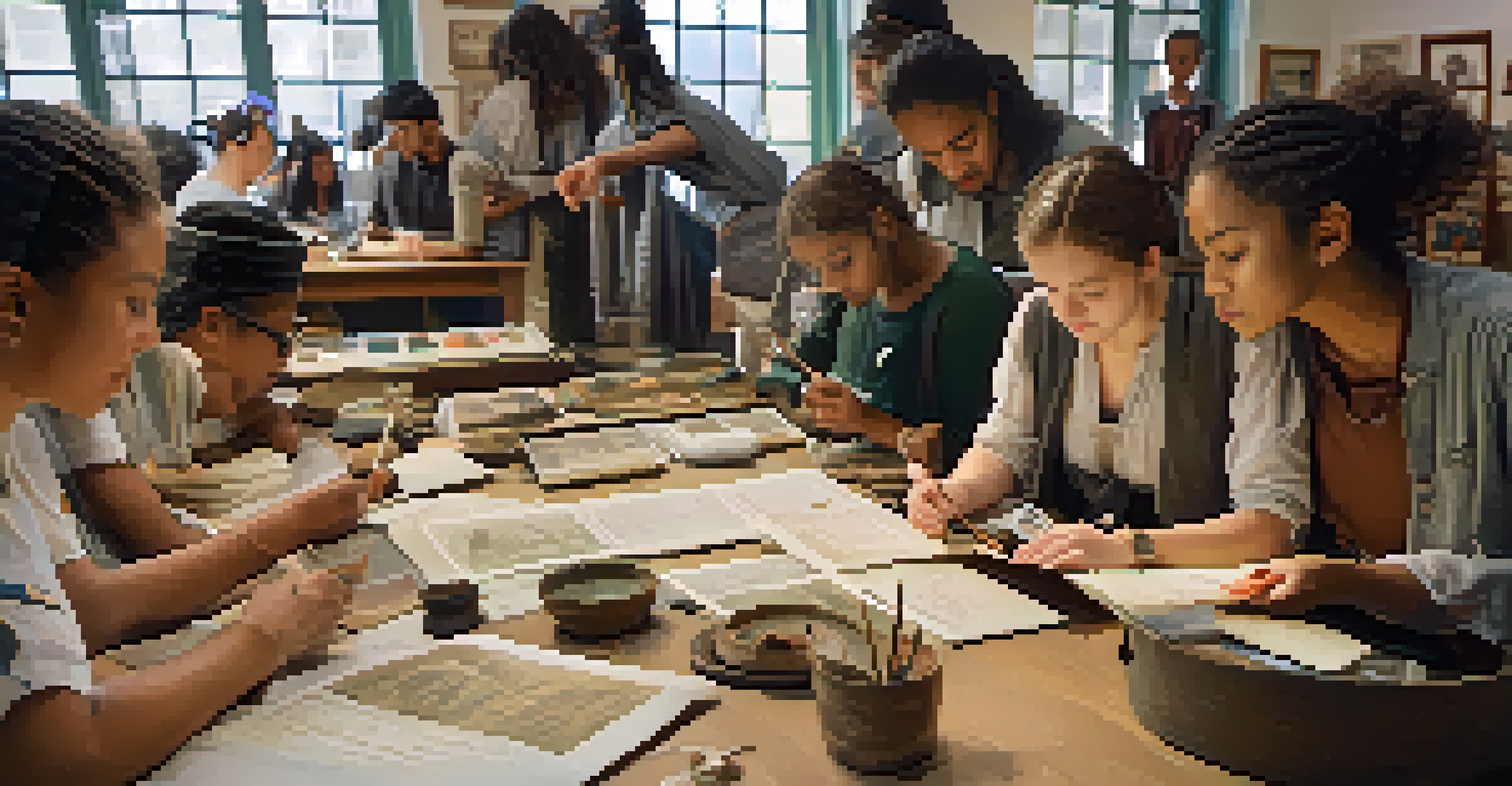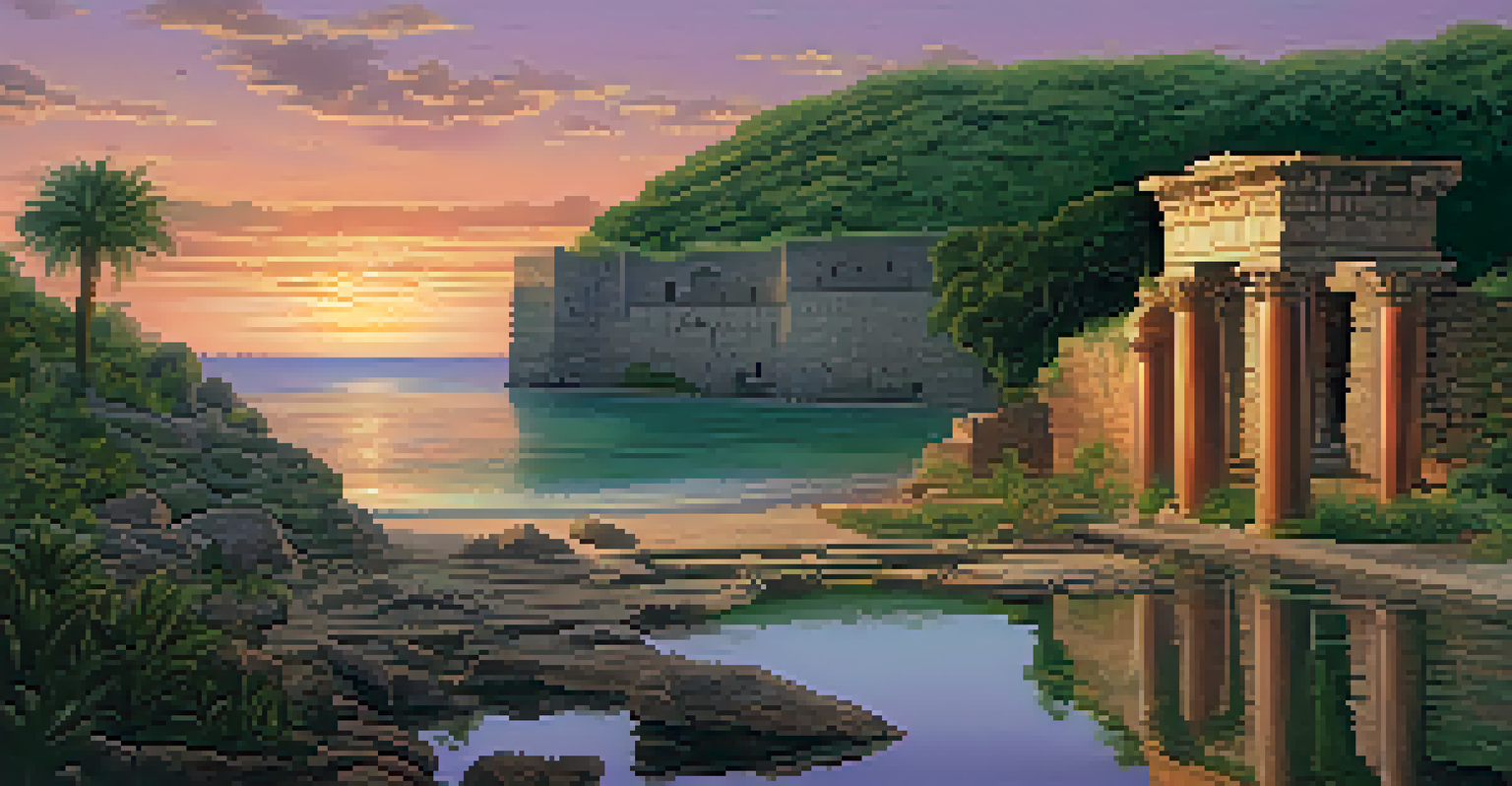The Role of Conservators in Preserving Cultural Heritage

Understanding Cultural Heritage and Its Importance
Cultural heritage encompasses the traditions, artifacts, and values that define a community. It's the tapestry of history that links us to our past, shaping our identities and enriching our lives. By preserving cultural heritage, we ensure that future generations can learn from and appreciate the experiences of those before them.
Preservation of cultural heritage is not just a responsibility; it’s an opportunity to connect with our past and shape our future.
This preservation includes everything from ancient monuments to everyday objects, each telling a unique story. For instance, a centuries-old painting can provide insights into the art and culture of its time, while indigenous artifacts connect us to the wisdom and practices of earlier civilizations. Without dedicated efforts to protect these treasures, we risk losing invaluable pieces of our history.
Conservators play a crucial role in this process, acting as guardians of our shared heritage. They employ a variety of techniques to maintain and restore items, ensuring that the stories they tell continue to resonate with audiences today and in the future.
The Diverse Responsibilities of Conservators
Conservators wear many hats, balancing scientific expertise with artistic sensitivity. Their responsibilities can range from assessing the condition of artifacts to developing restoration plans that respect the item's original intent. This multifaceted role requires a blend of skills in chemistry, history, and craftsmanship.

For example, a conservator might work on a delicate textile from a historical garment. They need to understand the materials used, the techniques of the time, and the best methods for cleaning and repairing without causing damage. This careful approach ensures that the object retains its authenticity while also being preserved for future study and enjoyment.
Cultural Heritage Defines Us
Cultural heritage connects us to our past, shaping identities and enriching lives through the preservation of traditions and artifacts.
In addition to hands-on work, conservators often engage in research and education. They share their findings with the public, helping to raise awareness of the importance of cultural preservation and inspiring others to appreciate and protect their heritage.
Techniques Used in Conservation
Conservators employ a range of specialized techniques to care for artifacts. These methods can include cleaning, repairing, and even recreating missing parts of an object. Each technique is chosen based on the material and historical significance of the item, ensuring minimal intervention while maximizing preservation.
Cultural heritage is the bridge that connects us to our ancestors and guides us towards a sustainable future.
For instance, when treating a fragile paper document, conservators might use a gentle cleaning method to remove dirt without damaging the ink or paper fibers. They may also employ stabilizing techniques to prevent further deterioration, using archival materials that are safe and reversible. This meticulous attention to detail helps maintain the integrity of the artifact.
Moreover, advances in technology have introduced new tools and methods, such as digital imaging and 3D printing. These innovations allow conservators to create detailed records of artifacts and even reproduce parts that are lost, making it easier to study and display historical items.
The Role of Science in Conservation
Science and conservation go hand in hand, as many techniques are grounded in scientific principles. Conservators often analyze materials to understand their composition and behavior over time. This scientific approach enables them to make informed decisions about the best methods for preservation.
For example, by using spectroscopy, conservators can identify the pigments in a painting, which helps them determine the best cleaning agents to use. Understanding chemical reactions is crucial in avoiding further damage during the restoration process. This reliance on science ensures that conservators can effectively balance the preservation of an item's physical state with its historical context.
Conservators: Guardians of History
Conservators blend scientific expertise and artistic sensitivity to protect and restore cultural artifacts, ensuring their stories endure.
Additionally, collaborations with scientists in fields like chemistry and materials science continue to enhance conservation practices. These partnerships foster innovation and lead to the development of new materials and techniques that improve the longevity of cultural artifacts.
Ethics and Best Practices in Conservation
Ethics play a vital role in conservation, guiding professionals in making decisions that respect the integrity of cultural heritage. Conservators adhere to strict ethical guidelines that prioritize the preservation of an object's original state while balancing the needs of stakeholders and the public. This ethical framework ensures that the work done is respectful and responsible.
For instance, when restoring a historical building, conservators must consider how much alteration is acceptable while still honoring the original design. They often engage with community members or cultural representatives to understand the significance of the object or site, ensuring that their work aligns with the values of those it represents.
Moreover, best practices in conservation are continually evolving. As new materials and methods emerge, conservators must stay informed and adaptable, ensuring that their practices reflect the latest developments in the field while maintaining ethical standards.
Conservators as Educators and Advocates
Beyond their hands-on work, conservators often take on the role of educators and advocates for cultural heritage. They engage with the public through workshops, lectures, and exhibitions, sharing their expertise and promoting awareness of the importance of preservation. This educational aspect helps demystify the conservation process and highlights its relevance to everyday life.
For example, a conservator might lead a community workshop where participants learn about caring for their own family heirlooms. This not only empowers individuals to take an active role in preserving their heritage but also fosters a deeper appreciation for the artifacts and traditions that shape their identities.
Collaboration is Key for Preservation
As challenges like climate change and urban development arise, collaboration among disciplines is essential for effectively preserving cultural heritage.
Additionally, conservators advocate for the protection of cultural heritage at a broader level, working with organizations and policymakers to ensure that funding and resources are available for preservation efforts. By raising awareness and promoting advocacy, they contribute to a collective responsibility for safeguarding cultural treasures.
The Future of Conservation in a Changing World
As our world evolves, so too do the challenges facing conservators. Climate change, urban development, and shifting cultural narratives all impact how we approach preservation. Conservators must adapt to these changes, finding innovative ways to protect and preserve cultural heritage for future generations.
For instance, rising sea levels threaten coastal heritage sites, prompting conservators to develop strategies for relocation or reinforcement. Similarly, as technology advances, they must navigate the complexities of digital preservation, ensuring that our digital cultural artifacts are not lost to obsolescence.

Looking ahead, collaboration will be key. By working together across disciplines, conservators can address these challenges more effectively, ensuring that cultural heritage remains a vibrant and essential part of our shared human experience.